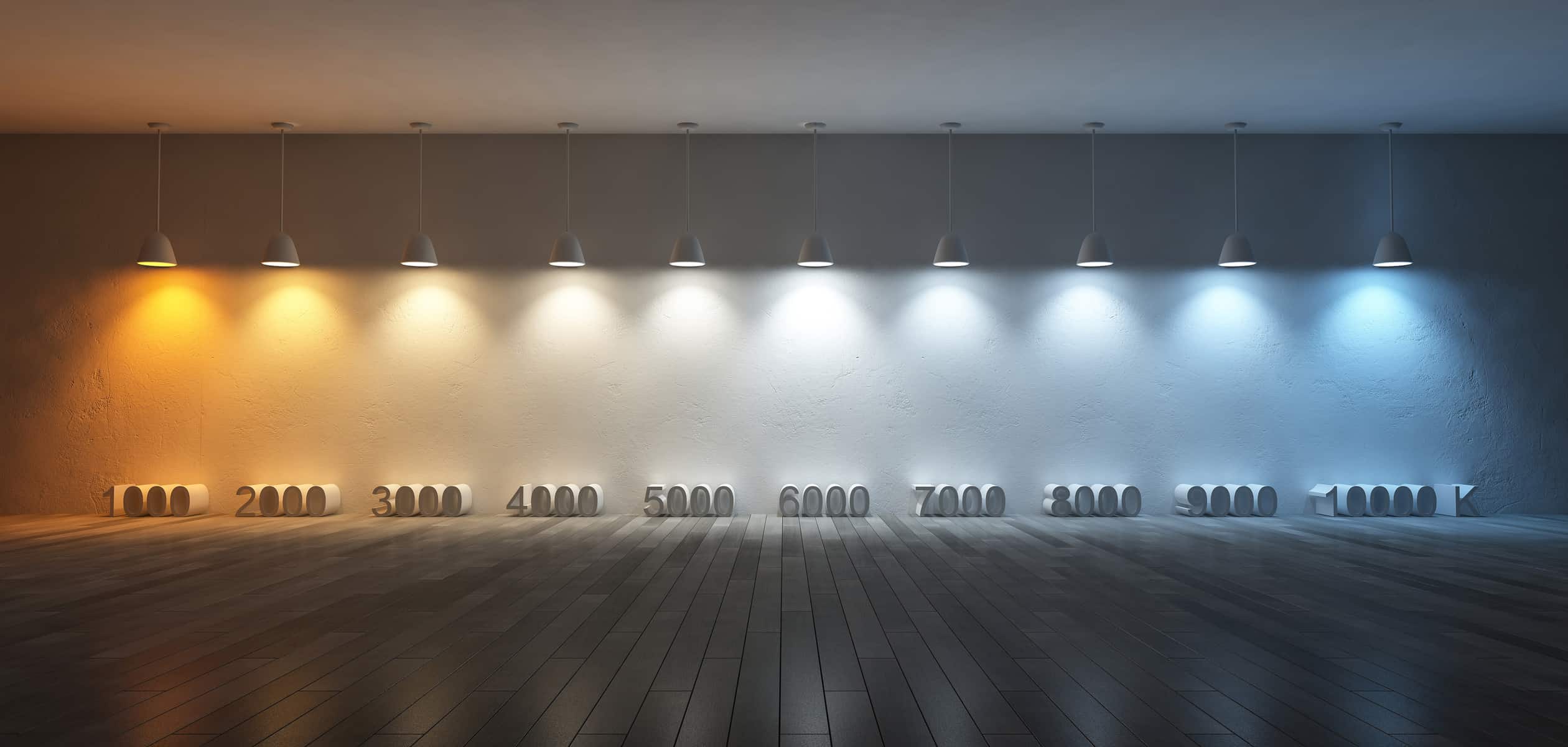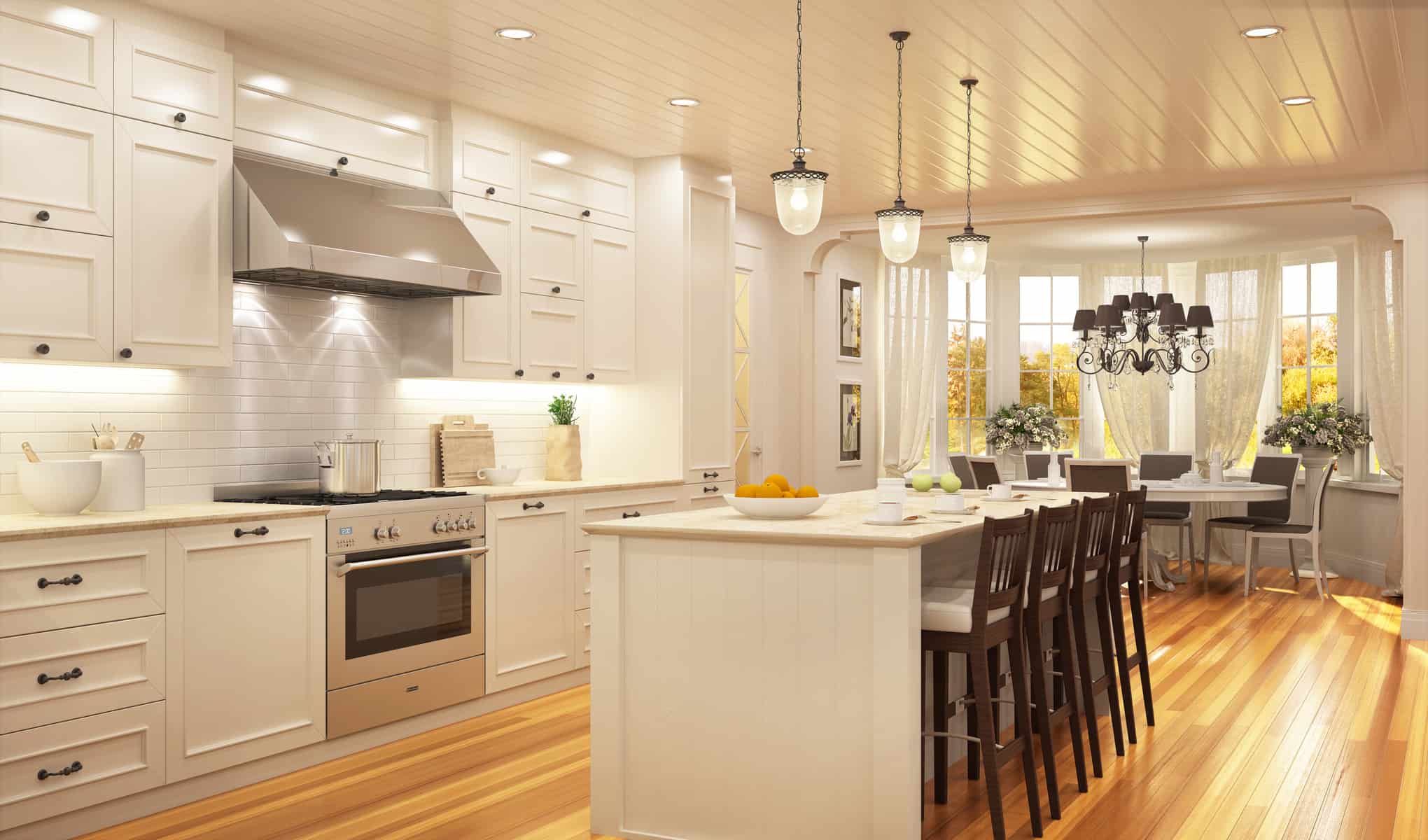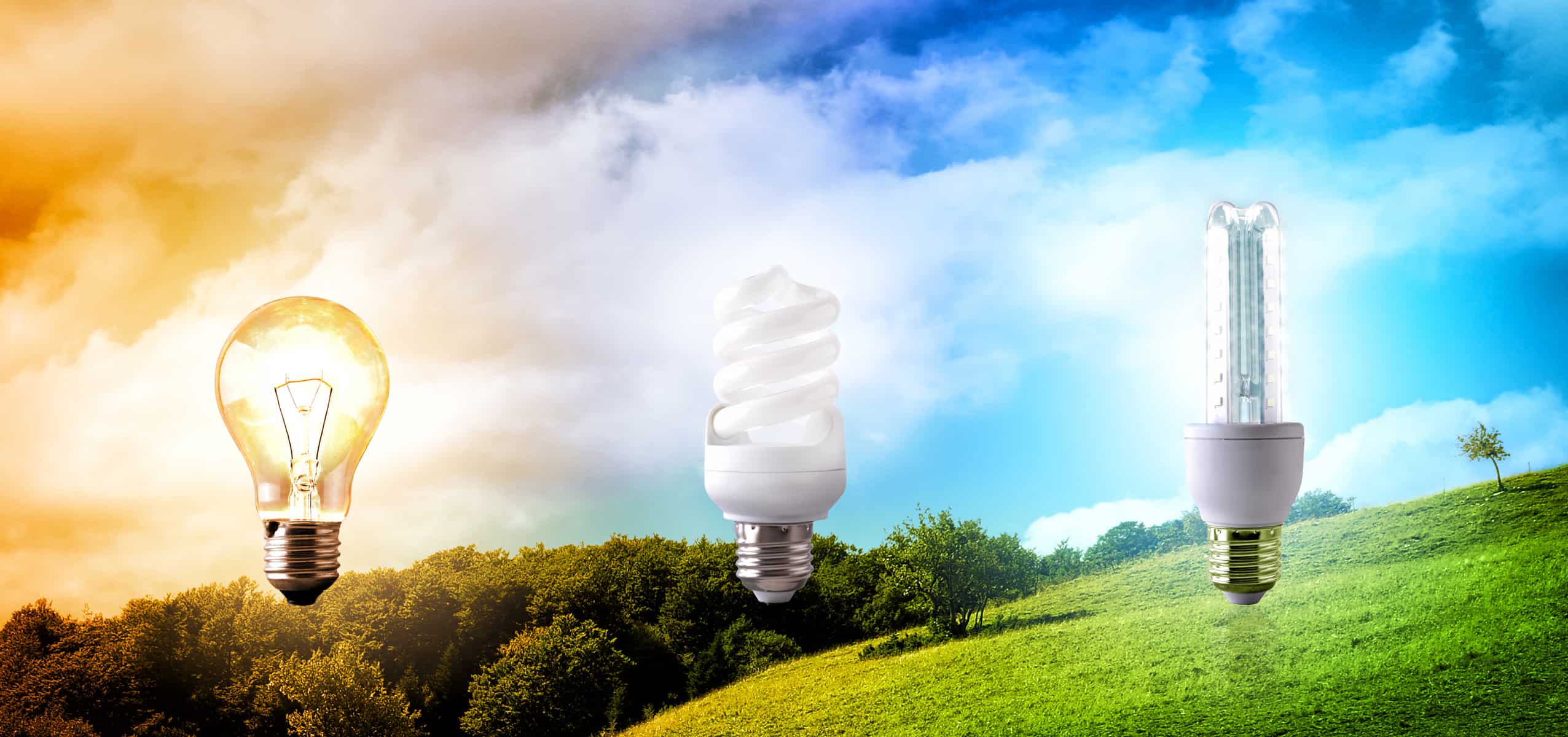LED Lighting – Understanding Color Temperature
Published August 2019
Have you ever noticed multi-colored light coming from a light fixture and wonder why part of the fixture is yellow and part is blue, or white?

Being in the lighting industry, the staff here at The Retrofit Companies, Inc, notices far too often, that the color temperature of lighting solutions is overlooked.
Lighting color is measured in temperature, in the unit of Kelvin. The higher the color temperature the whiter the light will be. Kelvin is typically referenced as the letter “K”.
So, how do I choose the correct Kelvin Color temperature?

Common temperatures for household lighting is typically 2700K to 3500K, depending on what the space is being used for. A table lamp is typically around 3000K, while other areas need a higher color temperature. Kitchens, laundry rooms, and hobby rooms often get as high as 4000K.
Commercial and healthcare are often 4000K-5000K in most areas, unless a certain, relaxed, casual vibe is intended.
Color Temperature
Here is a simple scale of color temperature. Different lighting technologies provide different color temperatures. Incandescent offers a warmer light, fluorescent offers a warm to cool color temperature, while LED can offer the full spectrum.

- A color less than 2000K gives off a very dim glow, similar to what you might get from a candlelight.
- 2000K-3000K gives off a soft, often yellow in appearance, light, which is best for casual atmospheres and exterior lighting.
- 4000K-5000K provides a fair amount of white color, in appearance, making this ideal for work spaces and task lighting.
- 5000K-6000K is a very bright, almost blue in color, temperature, similar to daylight.
- Color temperatures beyond 5000K are not very common unless in display areas or a work environment where that illumination is needed.

Advanced products in LED, like tunable lighting, are automating lighting to match our circadian rhythm. The idea is that we are healthier and more productive when the manufactured lighting we are spending our time in, is matching the light of a normal day. This concept has been supported in studies in healthcare, education and manufacturing facilities.
READ MORE ABOUT TUNABLE LIGHTING
Color temperature preferences vary from person to person, and business to business, but one thing remains the same: If you pick a color temperature for an area, all of the luminaries (fixtures/bulbs) should be consistently the same color.
If you want more information on lighting temperature and which Kelvin color temperature you should use on your next lighting project, please consult one of our experts and we will discuss the details with you.
